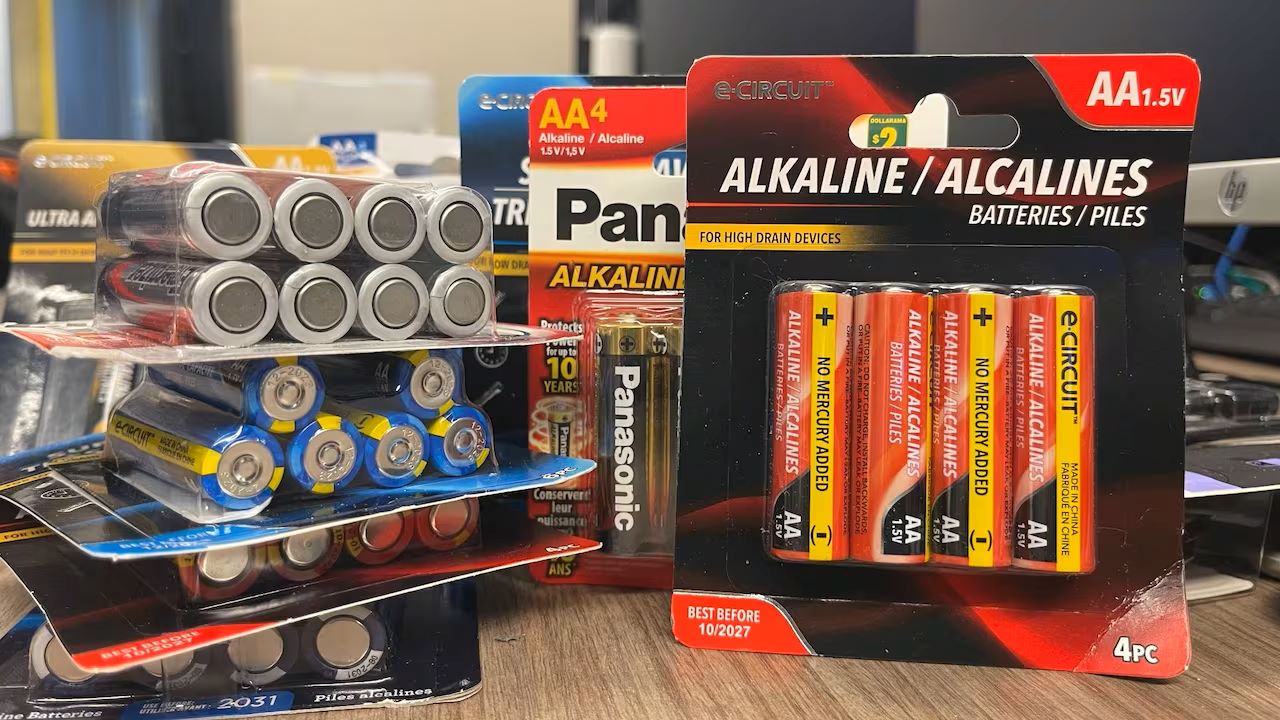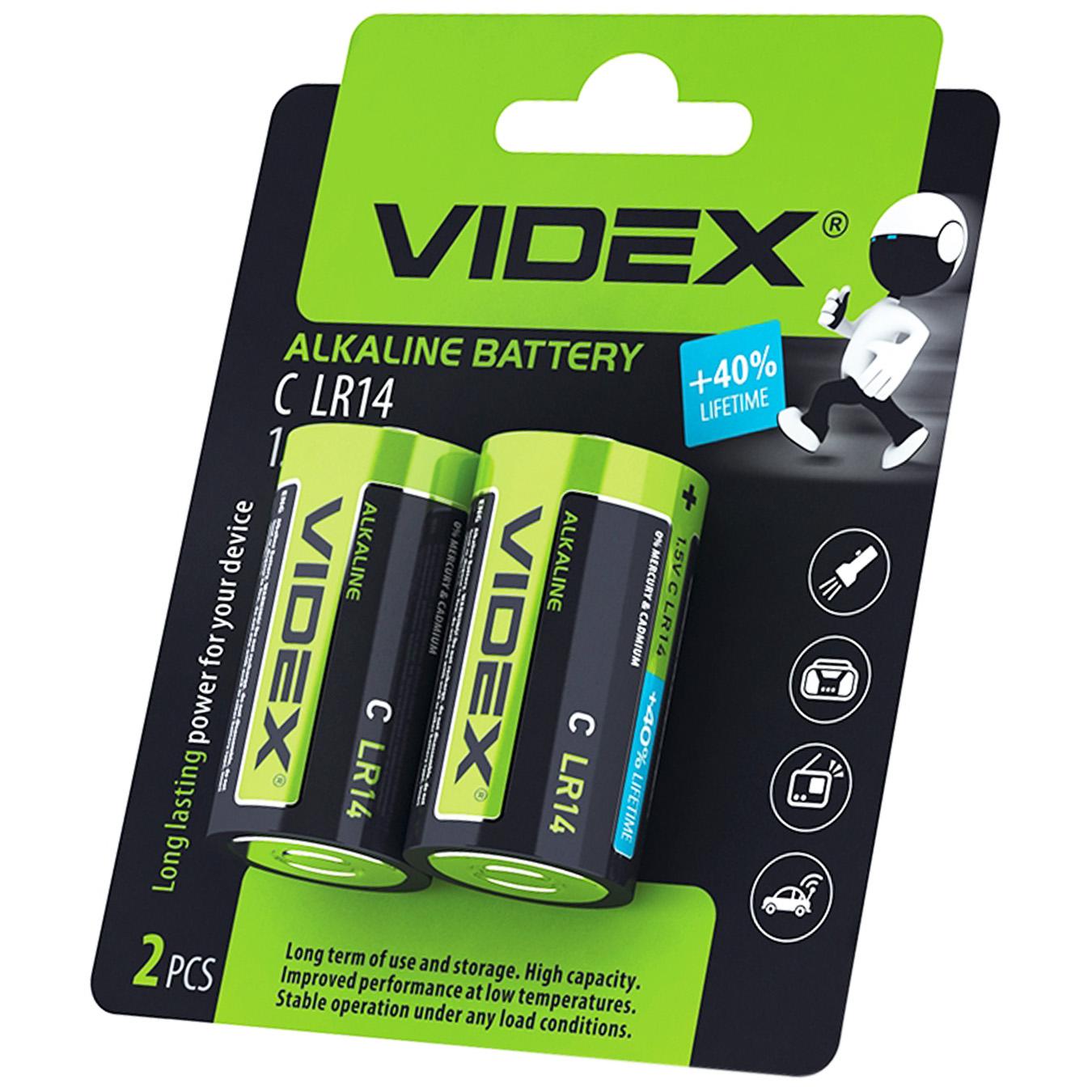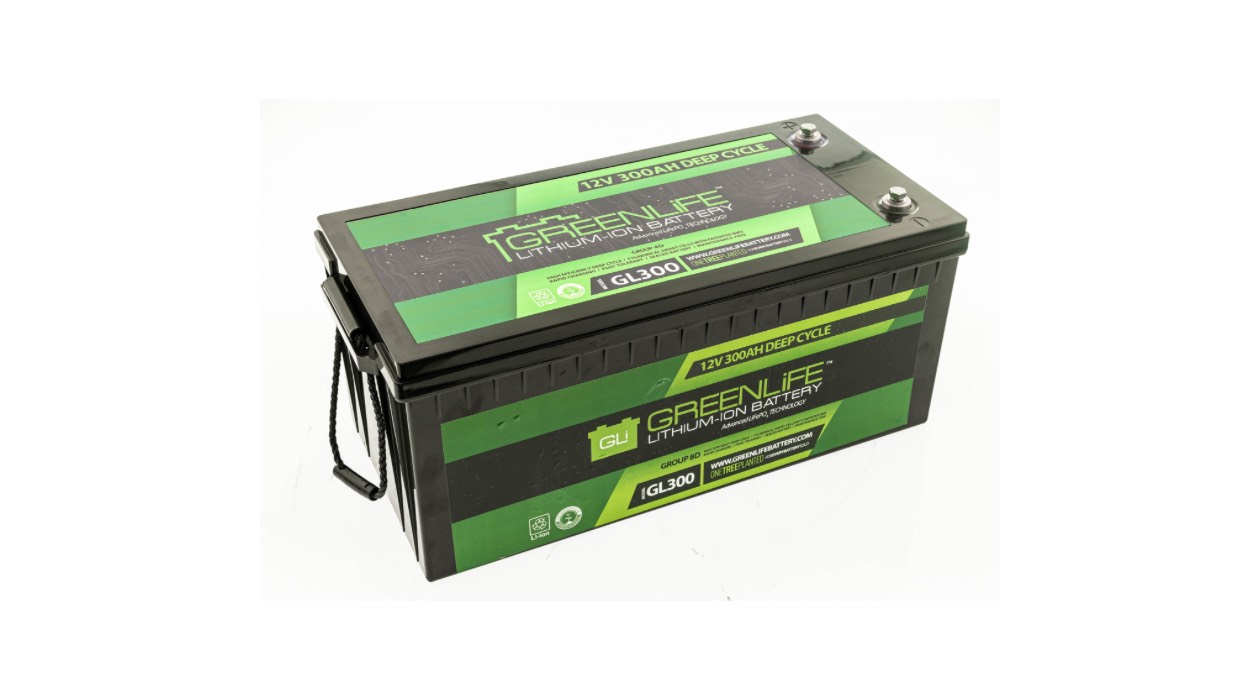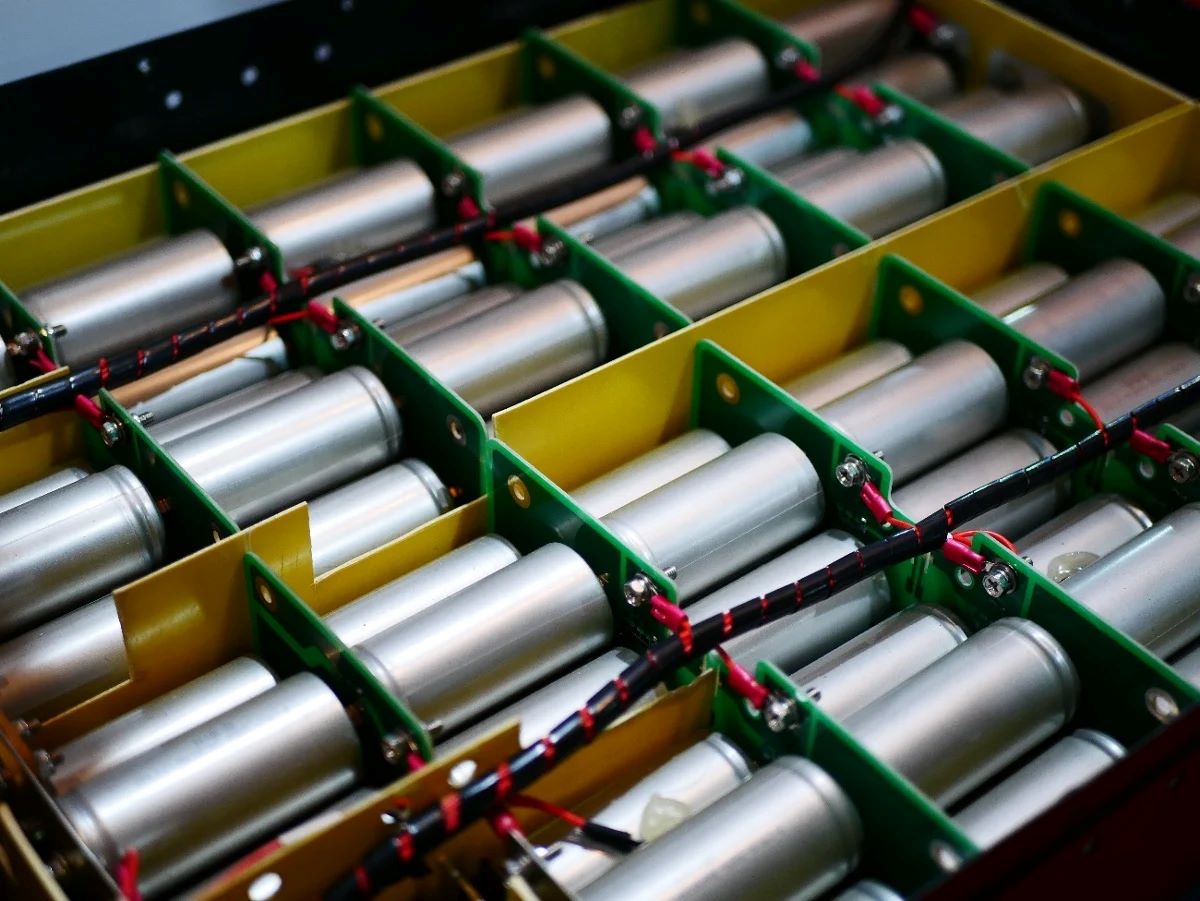

Articles
How To Store Lithium-Ion Batteries Long Term
Modified: December 7, 2023
Learn how to store lithium-ion batteries for long-term use with these helpful articles.
(Many of the links in this article redirect to a specific reviewed product. Your purchase of these products through affiliate links helps to generate commission for Storables.com, at no extra cost. Learn more)
Introduction
When it comes to storing lithium-ion batteries long term, there are several important factors to consider. Whether you have spare batteries for your electronic devices or you need to store batteries for future use, proper storage is crucial to ensure their longevity and optimal performance.
Lithium-ion batteries have become the preferred choice for powering a wide range of devices, from smartphones and laptops to electric vehicles and energy storage systems. These batteries offer high energy density, longer lifespan, and faster charging capabilities compared to traditional batteries. However, they are also sensitive to certain storage conditions, and without proper care, their performance and overall lifespan can be compromised.
In this article, we will explore the importance of long-term storage for lithium-ion batteries and provide you with essential tips and guidelines to ensure their optimal condition during storage.
Key Takeaways:
- Proper long-term storage of lithium-ion batteries is crucial to maintain performance, prevent degradation, and ensure safety. Factors such as temperature, state of charge, and battery health must be considered for optimal storage conditions.
- Reusing stored batteries requires careful assessment, monitoring, and adherence to best practices. Prioritize safety, compatibility, and regular maintenance to maximize efficiency and value for future use.
Read more: How To Store Lithium Ion Battery
Importance of Long-Term Storage for Lithium-Ion Batteries
Proper long-term storage of lithium-ion batteries is essential for maintaining their performance and extending their overall lifespan. When batteries are not in regular use, they can degrade over time, leading to reduced capacity, decreased performance, and even potential safety hazards.
One of the main reasons why long-term storage is crucial is to prevent self-discharge. Lithium-ion batteries have a natural tendency to lose charge even when not in use. This self-discharge phenomenon occurs due to internal chemical reactions within the batteries. If left unused for an extended period, the batteries may discharge completely, leading to irreversible damage.
Another important reason to store lithium-ion batteries properly is to prevent overdischarge. Overdischarging a battery can cause it to lose its ability to hold a charge, leading to diminished performance or complete failure. Therefore, it is crucial to ensure that the batteries maintain a minimum charge level during storage.
Furthermore, temperature control is vital for long-term battery storage. Extreme temperatures, whether hot or cold, can significantly impact battery performance and overall lifespan. High temperatures can accelerate the chemical reactions within the battery, increasing self-discharge and potentially causing thermal runaway, which can result in battery failure or even fires. On the other hand, cold temperatures can cause the battery to freeze, which can also damage its internal structure.
By understanding the importance of long-term storage, you can take the necessary steps to preserve the performance and lifespan of your lithium-ion batteries. In the following sections, we will discuss the factors that affect battery longevity and the steps you can take to properly prepare and store your batteries for extended periods.
Factors Affecting Battery Longevity
Several factors can influence the longevity and performance of lithium-ion batteries during long-term storage. Understanding these factors will help you make informed decisions when it comes to storing your batteries.
1. Temperature: Temperature plays a critical role in determining battery lifespan. Extreme temperatures, both hot and cold, can accelerate the degradation of the battery chemistry. It is recommended to store lithium-ion batteries in a cool, dry place with a temperature range between 20°C and 25°C (68°F to 77°F). Avoid exposing the batteries to direct sunlight or storing them in areas with high humidity.
2. State of Charge: Another important factor is the state of charge (SOC) when storing the batteries. It is recommended to store lithium-ion batteries at around 40% to 50% SOC. Storing batteries at full charge or completely drained can cause degradation over time. If storing for an extended period, it may be necessary to periodically check the SOC and recharge the batteries if needed.
3. Battery Age: The age of the battery is also a factor to consider. Lithium-ion batteries have a limited lifespan, even when not in use. Older batteries may have reduced capacity or may not perform optimally compared to newer batteries. If you have multiple batteries, it is advisable to use the older ones first and rotate them accordingly.
4. Battery Health: The overall health of the battery is crucial for long-term storage. If a battery is already degraded or damaged, it may not be suitable for long-term storage. It is important to assess the battery’s condition before storing it and replace any faulty or damaged batteries.
5. Exposure to Moisture and Humidity: Moisture and humidity can have a detrimental effect on battery performance and longevity. It is important to store lithium-ion batteries in a dry environment to prevent moisture buildup, which can lead to corrosion and damage to the battery’s internal components.
By considering these factors and taking the necessary precautions, you can maximize the lifespan and performance of your lithium-ion batteries during long-term storage. In the next section, we will discuss the steps you can take to properly prepare and store your batteries.
Preparation Steps for Long-Term Storage
Properly preparing your lithium-ion batteries for long-term storage is crucial to ensure their optimal condition during the period of non-use. Follow these steps to prepare your batteries for storage:
1. Clean and Inspect: Before storing your batteries, ensure that they are clean and free from any dirt or debris. Use a soft, dry cloth to gently wipe the battery surface. Inspect each battery for any signs of damage or swelling. If you notice any abnormalities, it is recommended to discard those batteries.
2. Charge to Optimal Level: Charge your batteries to an optimal level before storing them. The recommended charge level for long-term storage is around 40% to 50% SOC. This charge level helps to maintain the stability of the battery and prevent overdischarge during storage.
3. Disconnect Devices: If your batteries are connected to any devices, make sure to disconnect them before storing. This will prevent any unintentional drain on the battery’s charge and ensure that the battery remains in a stable state during storage.
4. Remove from Devices: If storing spare batteries, it is advisable to remove them from the devices. This helps to prevent any potential leakage or damage to the devices in case of battery failure. Additionally, storing batteries separately allows for better temperature control and reduces the risk of accidental activation.
5. Store in Proper Containers: Use appropriate storage containers or cases designed for lithium-ion batteries. These containers provide physical protection and help to prevent short circuits or accidental damage. Avoid storing batteries loose, as they can come in contact with metal objects or each other, potentially causing a harmful discharge.
6. Label and Date: It is important to label each stored battery with its corresponding device or purpose. Additionally, include the date of storage to keep track of the age of the battery. This will help you prioritize the usage of older batteries and ensure a proper rotation system.
7. Choose Suitable Storage Location: Find a suitable storage location that meets the recommended temperature and humidity conditions. A cool, dry place with a temperature range between 20°C and 25°C (68°F to 77°F) is ideal for long-term battery storage. Keep the batteries away from direct sunlight and sources of heat or moisture.
By following these preparation steps, you can ensure that your lithium-ion batteries are properly stored and maintained during their period of non-use. In the next section, we will discuss the recommended storage conditions to help optimize the lifespan of your batteries.
Recommended Storage Conditions
Proper storage conditions are crucial for maintaining the performance and longevity of lithium-ion batteries during long-term storage. Follow these recommendations to ensure optimal storage conditions:
1. Temperature: Store lithium-ion batteries in a cool environment with a temperature range between 20°C and 25°C (68°F to 77°F). Avoid extreme temperatures, both hot and cold, as they can impact the battery’s chemical stability and overall performance.
2. Humidity: Keep the storage area dry and humidity levels low. High humidity can lead to moisture buildup, which can potentially damage the batteries. It is important to prevent exposure to moisture, as it can cause corrosion and affect the battery’s performance.
3. Avoid Sunlight and Heat Sources: Store batteries away from direct sunlight or any sources of heat. Exposure to heat can accelerate the chemical reactions within the battery, leading to higher self-discharge rates and potential damage.
4. Adequate Ventilation: Ensure that the storage area has proper ventilation to maintain a stable environment. Good airflow helps to dissipate any heat generated and prevents the accumulation of potentially harmful gases.
5. Separate Storage: It is advisable to store batteries separately to minimize any potential risk. If a battery were to fail or leak, separation prevents any damage to adjacent batteries or nearby objects.
6. Regular Inspection: Periodically inspect the stored batteries to ensure their condition. Check for any signs of damage, leakage, or swelling. If you notice any abnormalities, it is important to handle the batteries safely and dispose of them following the appropriate guidelines.
By following these recommended storage conditions, you can help prolong the lifespan and maintain the performance of your lithium-ion batteries during long-term storage. In the next section, we will discuss methods for monitoring battery health during storage.
Store lithium ion batteries long term at a 40% charge in a cool, dry place. Avoid extreme temperatures and never store them fully charged or fully depleted.
Read more: How To Store A Lithium Battery
Methods for Monitoring Battery Health during Storage
Monitoring the health of your lithium-ion batteries during long-term storage is essential to ensure their optimal condition and functionality. Here are some methods you can use to monitor battery health:
1. Regular Inspection: Conduct visual inspections of the stored batteries at regular intervals. Look for any signs of damage, leakage, or swelling. If you notice any abnormalities, it is crucial to handle the batteries safely and take appropriate action, such as disposing of them properly.
2. Voltage Checks: Periodically measure the voltage of the stored batteries using a multimeter or a battery tester. This can give you an indication of the battery’s charge level and help identify if it has significantly self-discharged or if there is any other issue affecting its health.
3. Capacity Testing: Perform capacity tests on the batteries to evaluate their overall health. This can be done using a battery analyzer or specialized testing equipment. Capacity testing provides insights into the battery’s ability to hold and deliver charge, helping you identify any degradation or loss in performance.
4. Recharge: If the stored batteries show a significant drop in charge level during monitoring, recharge them to the recommended storage charge level (around 40% to 50% SOC). Regularly recharging the batteries ensures they do not self-discharge to a critical level, which can lead to capacity loss or damage.
5. Battery Management Systems (BMS): For larger battery packs or systems, consider utilizing battery management systems. BMS helps monitor and control the individual cells within the battery pack, ensuring balanced charging and discharging. It can also provide real-time data on the battery’s health, temperature, and voltage levels.
6. Data Logging: If you want to have a more detailed understanding of the battery’s performance over time, you can use data loggers to record important parameters such as temperature, voltage, and capacity. This data can help you track any changes or trends in the battery’s health during storage.
By employing these methods, you can closely monitor the health of your lithium-ion batteries during long-term storage. This proactive approach allows you to identify any issues early on and take appropriate measures to maintain the batteries’ performance and extend their overall lifespan. In the next section, we will discuss precautions and safety measures to consider during storage.
Precautions and Safety Measures
When storing lithium-ion batteries long term, it is important to prioritize safety to prevent any potential hazards. Here are some precautions and safety measures to consider:
1. Avoid Physical Damage: Handle lithium-ion batteries with care to prevent any physical damage. Avoid dropping, crushing, or puncturing the batteries, as it may lead to short circuits or leakage of hazardous materials.
2. Discharge Partially: If you plan to store the batteries for an extended period, it is recommended to discharge them partially to a safe level. A partially discharged battery is less likely to self-discharge to a critical level and eliminates the risk of overdischarge during storage.
3. Protect from Extreme Temperatures: Protect batteries from extreme temperatures. Do not expose them to excessive heat or direct sunlight, as it can cause thermal runaway or even result in fires. Conversely, avoid exposing batteries to freezing temperatures, as it can damage their internal structure.
4. Store in Fireproof Containers: Store lithium-ion batteries in fireproof storage containers or pouches designed specifically for battery storage. These containers provide an added layer of protection in case of a thermal event and greatly reduce the risk of fire hazards.
5. Prevent Short Circuits: Avoid storing batteries loose or in contact with other metal objects. Metallic objects can create a short circuit, leading to dangerous thermal reactions. Store batteries individually or use insulating materials to separate them.
6. Store Away from Flammable Materials: Keep stored batteries away from flammable materials, such as gasoline, solvents, or highly combustible substances. The electrolyte in lithium-ion batteries is flammable, and any contact with such materials can increase the risk of fire.
7. Properly Dispose of Damaged Batteries: If you notice any signs of damage, swelling, or leakage in a battery, it is crucial to handle it safely and dispose of it properly. Contact your local waste management facilities for guidance on how to safely dispose of damaged or faulty batteries.
8. Follow Manufacturer’s Guidelines: Always refer to the manufacturer’s guidelines and instructions for storing the specific type of lithium-ion batteries you have. Different battery chemistries or models may have specific precautions or recommendations that you need to follow.
By taking these precautions and safety measures, you can significantly reduce the risk of accidents or hazards while storing lithium-ion batteries. Prioritizing safety not only protects you and your property but also ensures the effective storage and maintenance of your batteries. In the next section, we will discuss best practices for reusing stored batteries.
Best Practices for Reusing Stored Batteries
Stored lithium-ion batteries can often be reused after their period of long-term storage. However, it is important to follow best practices to ensure their safe and optimal performance. Here are some recommendations for reusing stored batteries:
1. Recharge and Test: Before reusing a stored battery, recharge it fully to its recommended operating level. Once charged, perform a capacity test or voltage check to ensure that the battery is still in good condition and capable of delivering the expected performance. This step helps assess the battery’s health and identify any degradation that may have occurred during storage.
2. Observe for Abnormalities: After recharging the stored battery, observe its performance and monitor for any abnormalities. Pay attention to factors such as the battery’s capacity, charging time, and discharge duration. If you notice any significant deviations or unexpected behaviors, it may be an indication that the battery is no longer suitable for use and should be replaced.
3. Monitor Battery Temperature: During use, keep an eye on the battery’s temperature. Excessively high temperatures can lead to degradation and reduced lifespan. If you notice that the battery becomes excessively hot during use, discontinue its operation and allow it to cool down before further assessment. Extended use of a hot battery can cause irreversible damage.
4. Follow Device Compatibility Guidelines: When reusing stored batteries, ensure that they are compatible with the devices you intend to use them in. Different devices may have specific voltage or capacity requirements, and using an incompatible battery can lead to performance issues or damage to the device. Refer to the device’s user manual or manufacturer guidelines for battery compatibility information.
5. Rotate Batteries: If you have multiple stored batteries, it is advisable to rotate their usage periodically. This practice helps distribute the wear and usage evenly across all batteries. By rotating the batteries, you avoid overuse of a specific battery and give others a chance to be utilized, prolonging their overall lifespan.
6. Dispose of Defective Batteries: If you encounter any stored batteries that consistently underperform or exhibit faulty behavior even after recharging, it is best to dispose of them properly. Continuing to use defective batteries can compromise safety and lead to potential damage or accidents.
7. Regular Maintenance: Once you have reused a stored battery, it is important to continue regular maintenance and care. Follow good battery practices, such as avoiding extreme temperatures, preventing overdischarge, and not exposing the battery to physical damage or moisture. This will help optimize the battery’s lifespan and performance for future use.
By following these best practices, you can make the most out of your stored lithium-ion batteries and ensure safe and efficient reuse. Remember to prioritize safety and conduct thorough assessments before integrating stored batteries back into active use.
Conclusion
Properly storing lithium-ion batteries long term is essential for maintaining their performance, extending their lifespan, and ensuring overall safety. By following the recommended guidelines and best practices, you can confidently store your batteries knowing that they will remain in optimal condition for future use.
During the storage period, it is crucial to consider factors that can affect battery longevity, such as temperature, state of charge, battery age, exposure to moisture, and more. By understanding these factors, you can take appropriate measures to mitigate any potential risks and prolong the lifespan of your batteries.
Preparation steps, such as cleaning and inspecting the batteries, charging them to the optimal level, and storing them in suitable containers, help create a favorable environment for long-term storage. Additionally, monitoring battery health through regular inspections, voltage checks, and capacity testing enables you to identify any issues early on and take appropriate action to maintain their performance.
By following recommended storage conditions, such as maintaining a suitable temperature, avoiding direct sunlight or heat sources, and providing adequate ventilation, you can minimize the risk of degradation or potential hazards. Precautions and safety measures, including protecting against physical damage, preventing short circuits, and storing batteries away from flammable materials, further ensure safety during storage.
Reusing stored batteries requires careful assessment, including recharging, testing, and observing for any abnormalities. Following best practices, such as monitoring battery temperature, ensuring compatibility with devices, rotating batteries, and responsibly disposing of defective batteries, allows for safe and efficient reuse.
In conclusion, proper long-term storage of lithium-ion batteries is essential for maintaining their performance, extending their lifespan, and ensuring safety. By understanding the factors that affect battery longevity, following recommended storage conditions, and practicing necessary precautions, you can store and reuse your batteries with confidence, maximizing their efficiency and value for future use.
Frequently Asked Questions about How To Store Lithium-Ion Batteries Long Term
Was this page helpful?
At Storables.com, we guarantee accurate and reliable information. Our content, validated by Expert Board Contributors, is crafted following stringent Editorial Policies. We're committed to providing you with well-researched, expert-backed insights for all your informational needs.















0 thoughts on “How To Store Lithium-Ion Batteries Long Term”